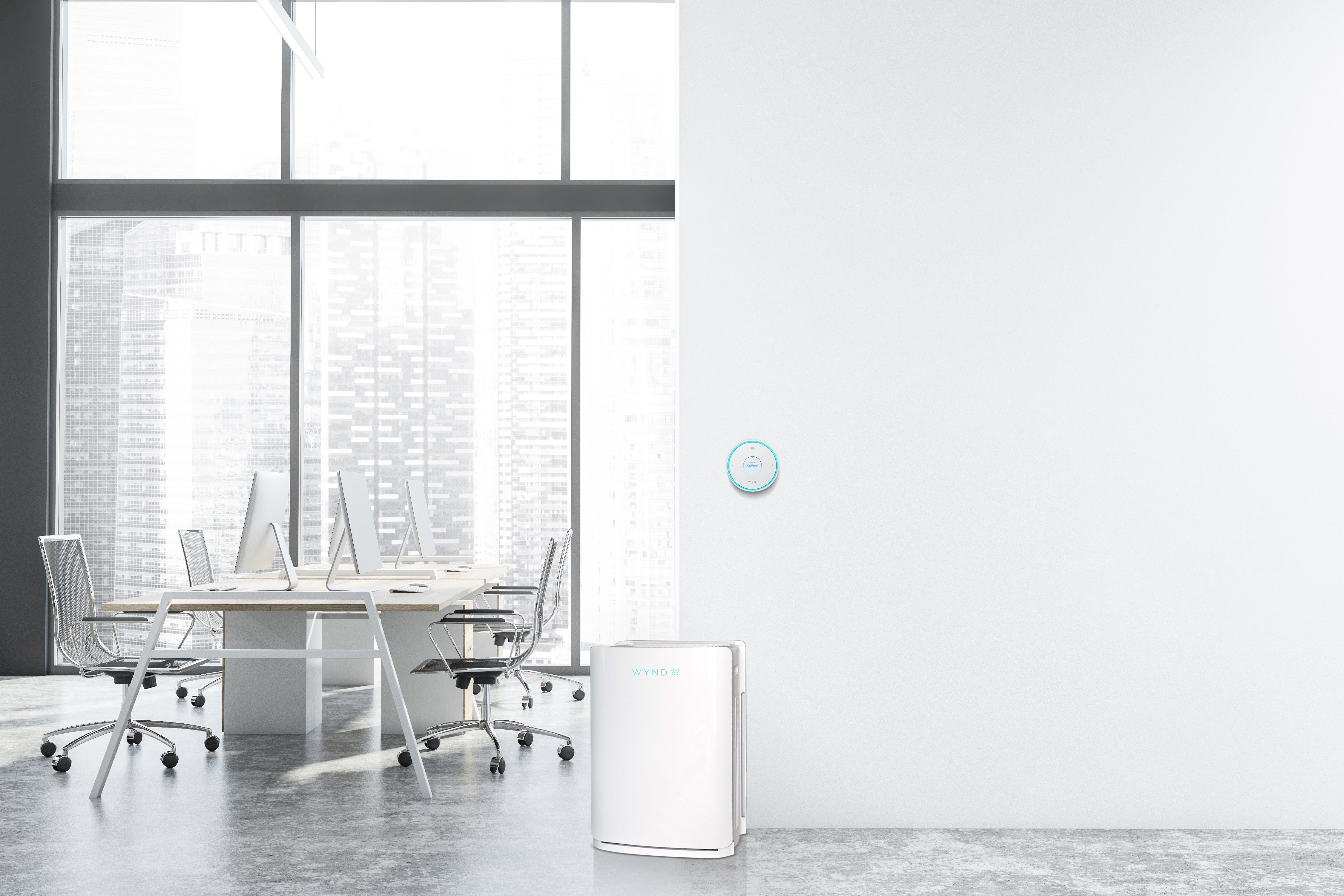Poor air quality is a distraction in the workplace. Whether you experience foul odors, dampness, dust, poor ventilation, or some other cause of low air quality, lack of clean air in the office can cause you to lose focus and even feel unsafe. For office building owners and managers, understanding the causes of poor indoor air quality, how you can monitor it, and what you can do to improve indoor air quality are essential to creating the best work environment possible.
Impact of Poor Air Quality in the Office
If your goal is to maintain a welcoming work environment and increase productivity, keeping a clean office should be your top priority as this will be reflected in the work of your team. In the words of former UK prime minister Winston Churchill, “We shape our buildings; thereafter they shape us.” If you are asking why indoor air quality matters, consider a few of the side effects of poor air quality in the office:
- Decreased productivity and morale
- Higher risk of health problems such as headaches, allergies, respiratory issues
- Decreased concentration and cognitive abilities
- Absenteeism due to health problems
- Increased risk of infections and spreading of illnesses (and potentially higher healthcare costs)
- Lower employee satisfaction and retention
- Elevated risk of legal liability for employers
- Reduced comfort in the workplace
Top Causes of Poor Air Quality in the Office
As you seek to improve the office environment for your team, you may be wondering: What is causing poor air quality in my office? In many cases, multiple factors can contribute to making a space feel stuffy, stale, or musty. According to the Environmental Protection Agency, exact causes can vary based on the age, condition, and location of your building. For example, buildings in California may be plagued by dry air while properties in Florida face elevated moisture levels. Older buildings may be subject to drafts while newly renovated spaces may have lingering dust particles from repairs. 
If you have not yet identified what is causing poor air quality at your property, consider reviewing the list of common causes below:
- Poor ventilation
- Indoor air pollution from sources such as cleaning products, mold, pesticides, and chemicals
- Second-hand smoke
- Failure to replace air filters
- Elevated humidity levels
- Dust and other particulate matter
- Volatile Organic Compounds (VOCs) from building materials, furniture and office equipment
- Biological contaminants such as bacteria, viruses, and allergens
- Carbon monoxide leaks from heating and cooling systems
How to Monitor Air Quality in the Office
Monitoring the air quality in your office on a regular basis is a general best practice. Unfortunately, knowing what to look for and having an easy way to track it can seem difficult. How can you measure the presence of smoke, dust, dander, or humidity? Furthermore, what other air quality factors should you monitor and how can you track them all at once?
Recent innovations in air monitoring technology makes answering these questions easier than ever before. With low-cost monitors and sensors, you can instantly detect the status of your air from an online platform or mobile app. Tools like the WYND Halo measure over 16 pollutants in the air and make recommendations on how to optimize your indoor air quality. The device is non-obtrusive and automatically identifies problems and notifies you of issues, allowing you to focus on work and providing peace of mind. Based on your space’s pollutant profile, the WYND Halo will not only recognize issues but also communicates with the WYND Max Air Purifiers to fix them.
What Can You Do to Improve Air Quality in the Office?
As more health-conscious employees enter the workforce, companies are taking more steps to show that they prioritize safety and well-being. After learning about the benefits of keeping a clean office space, you may next wish to understand what you can do to improve the air quality in your building. Fortunately, many easy steps can be taken to reduce and eliminate causes of bad air quality:
- Improve ventilation by opening windows and installing air filters
- Maintain a clean and dry office environment to prevent mold and dampness
- Regularly replace air filters
- Use environmentally friendly cleaning products
- Limit the use of pesticides and harmful chemicals
- Conduct regular air quality assessments and monitor air quality levels with the WYND Halo
- Use low-emitting office equipment and furnishings
- Regularly clean and maintain heating, ventilation and air conditioning (HVAC) systems
- Educate employees about the importance of air quality and encourage them to take steps to improve it
- Invest in a WYND Max Air Purifier to clean up to 1,200 square feet of space in under 30 minutes
With these regular habits, poor air quality in your office is likely to become a problem of the past. A healthy and clean environment will contribute to increased productivity and higher worker satisfaction, allowing you to have a work environment free of poor air quality distractions.
Whether you are trying to identify the cause of poor air quality in your workspace, looking to track general air quality, or ready to improve your environment, the WYND Team has the expertise and tools to help. Our innovative products can give you the peace of mind to focus on your work, your team, and growing your business.


